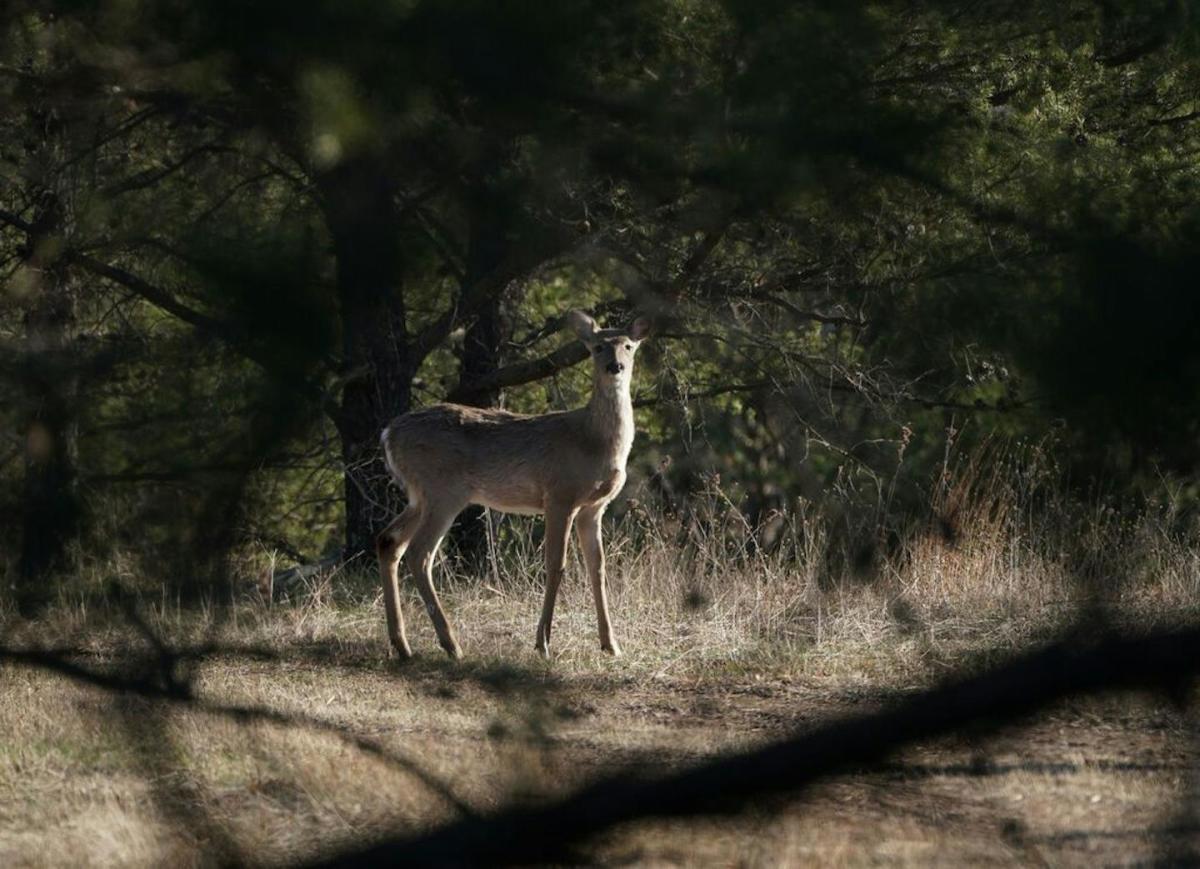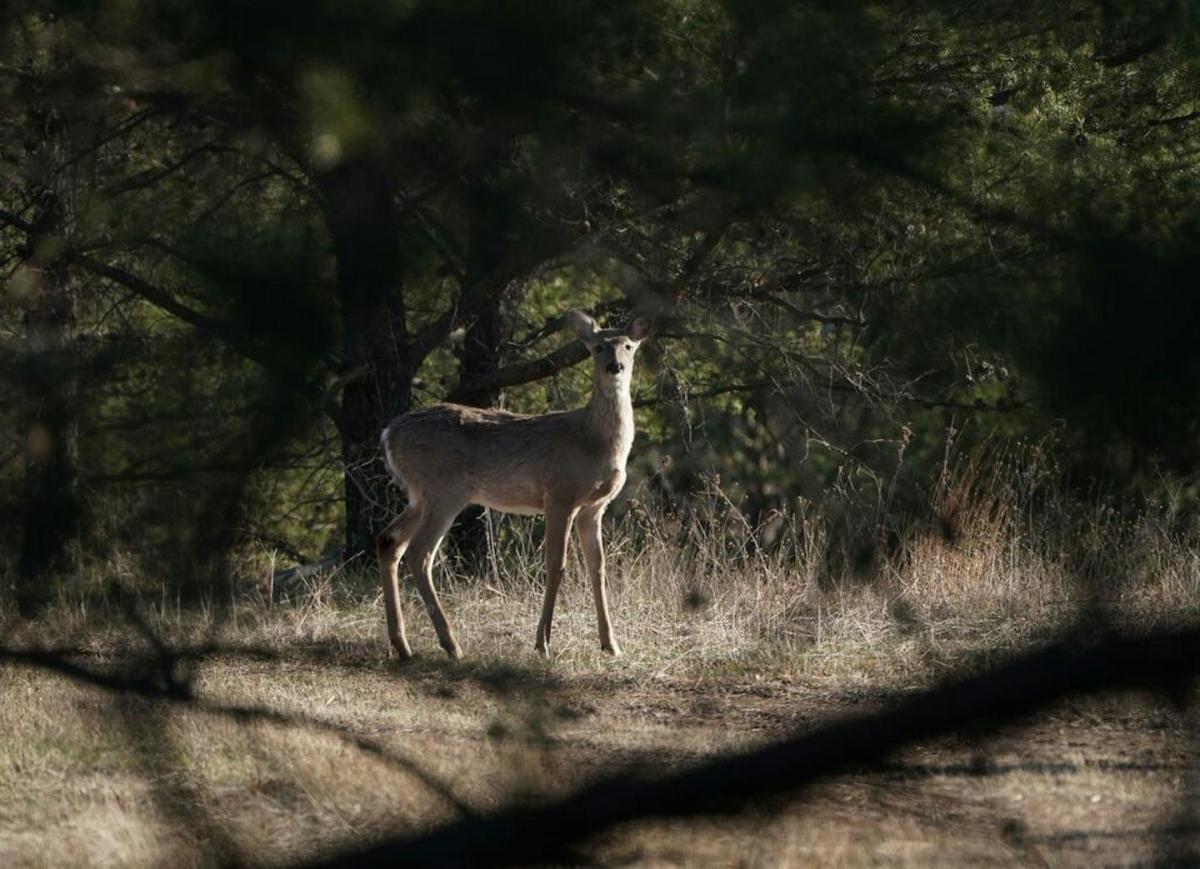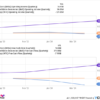
It’s not on the northern forest roads, or on a long winding curve where it’s hard to see. It’s not in the grasslands or on the narrow county highways that roll past farms and thick corn fields. The most likely place for a deer to suddenly jump out in front of a car and cause a crash in Minnesota is just outside of Minneapolis, on one of the busiest roads in the state — Interstate 94 between Maple Grove and St. Cloud.
“When you get just outside the real metro urban area and into the outskirts of Twin Cities, that’s where you get this confluence of a having a really high deer density and lots and lots of traffic,” said Ron Moen, a wildlife biologist at the Natural Resources Research Institute in Duluth.
Scientists at the institute and the University of Minnesota are finishing a project to map exactly where in the state drivers are most likely to hit a deer. The map, which hasn’t been published yet, will be publicly available by the end of the summer. The hope is that the data will help road engineers find the most dangerous stretches and prioritize where to put up wildlife fences or other protections, Moen said.
The study found that about two-thirds of Minnesota deer-vehicle collisions each year happen just outside the Twin Cities, especially in the suburbs leading out to St. Cloud.
That’s because there seems to be three main factors for deer collisions, Moen said: The speed of the vehicle, the number of cars on the road and the amount of deer in the area.
Add in highway speeds, and the suburban areas can become particularly difficult places for drivers to avoid deer.
Moen said he and other researchers began the study thinking that visibility would play a much bigger role in the accidents than the data ended up showing. Big curvy roads in wooded areas had fewer deer collisions than expected.
“That’s probably, in part, because people are paying more attention on the curve and slowing down a little,” he said.
The study was paid for by the state’s environmental trust fund as part of a push to make roads safer for both drivers and wildlife.
The Minnesota Department of Transportation recently found out that simple wire-mesh fences near the spawning grounds of endangered turtles greatly reduce the number killed by cars each spring. For larger animals like deer, elk and moose, western states have had success building wildlife overpasses over busy highways.
How many deer are hit each year?
It’s been hard to calculate how many deer Minnesota drivers hit each year.
Roughly 1,200 deer accidents, causing several deaths, dozens of hospitalizations and about $20 million in property damage are reported every year to police, according to the Minnesota Department of Public Safety. But those represent only the worst cases, usually involving motorcycles, serious injuries or totaled or badly damaged cars.
The vast majority — more than 90% — of deer collisions are not reported to police, Moen said.
State Farm Insurance estimated that Minnesotans hit closer to 35,000 deer a year, causing a few hundred millions of dollars in property damage. But the company’s formula for arriving at that number isn’t public.
As part of the new map study, Moen patrolled roadsides counting deer carcasses for months to find out which source of numbers was closer to the truth.
“We didn’t come up with a new statewide estimate, but State Farm’s estimate is closer to correct,” he said. “That 35,000 or 36,000 number is the correct order of magnitude.”
The best solutions in Minnesota will probably involve some combination of fences and driver awareness, Moen said.
Wildlife overpasses seem to work better in states where big animals travel along predictable migratory paths down foothills and mountains, he said.
“Out west those deer and other ungulates already get funneled into certain areas,” he said. “Our deer are everywhere and they cross roads everywhere.”
But driving just a little slower, especially on highways in the suburbs, and a few key fences could keep a deer from crossing directly in front of your bumper, he said.
EMEA Tribune is not involved in this news article, it is taken from our partners and or from the News Agencies. Copyright and Credit go to the News Agencies, email news@emeatribune.com Follow our WhatsApp verified Channel





